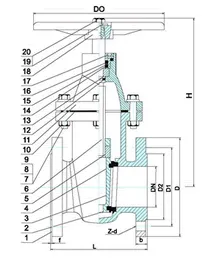9 月 . 27, 2024 23:56 Back to list
Current Pricing Trends for Electric Cable Wire per Meter
Understanding Electric Cable Wire Prices Per Meter
When it comes to electrical installations, whether for residential, commercial, or industrial applications, understanding the costs associated with electric cables and wires is essential. Prices can fluctuate based on a variety of factors, making it crucial for consumers, contractors, and businesses to stay informed about current market trends. This article explores the factors that influence electric cable wire prices per meter and offers insights on how to choose the right cables for your needs.
Factors Influencing Prices
1. Material Composition The most significant factor affecting the price of electric cables is the material from which they are made. Copper and aluminum are the most common materials used for conductors. Copper, being a highly efficient conductor, is generally more expensive than aluminum. As a result, prices for copper cables per meter can be considerably higher. Additionally, the insulation material (such as PVC, XLPE, rubber, etc.) also impacts the overall price. High-quality insulation tends to cost more due to its durability and safety features.
2. Cable Specifications Different types of cables are designed for specific applications, which can affect their price. For instance, high-voltage cables, fire-resistant cables, and armored cables typically come at a premium due to their specialized construction and safety features. Cables designed for outdoor or harsh environments may also carry higher prices because they require additional protective layers. It is essential to match the cable specifications to your application to ensure safety and compliance with electrical codes.
3. Market Demand and Supply Like any commodity, the prices of electric cables can vary based on market demand and supply dynamics. During times of increased construction and infrastructure investment, the demand for electrical wires may soar, leading to higher prices. Conversely, during economic downturns, reduced demand can lead to price drops. External factors, such as geopolitical issues or trade tariffs, can also impact pricing and availability.
4. Manufacturer and Brand Reputation Prices can vary significantly between different manufacturers and brands. Established brands that are recognized for their quality and safety standards may charge a premium for their products. Investing in reputable brands is often wise, as it can provide increased assurance regarding reliability and performance.
5. Length and Bulk Purchases When purchasing electric cables, the price per meter may decrease when buying in bulk. Suppliers often offer discounts for large orders, making it more economical for contractors and businesses to stock up. For small-scale projects, purchasing the necessary lengths individually may lead to higher costs per meter, so planning and purchasing in bulk can yield savings.
electric cable wire price per meter

Choosing the Right Cables
When selecting electric cables, consider the following
- Application Requirements Understand the specific requirements for your project. High-wattage appliances may require thicker wires with a higher amperage rating. - Local Electrical Codes Ensure compliance with local regulations regarding electrical installations. This can affect both the type of cable and its specifications.
- Future Needs Anticipate potential future demands. If scaling up your electrical system is a possibility, it may be wise to invest in a higher capacity wire now.
- Budget Constraints Balance quality and budget constraints. While cheaper cables might save money initially, they can lead to increased long-term costs through inefficiency or safety hazards.
Conclusion
In summary, the price of electric cable wire per meter is influenced by a multitude of factors, including material composition, cable specifications, market dynamics, manufacturer, and purchasing choices. Understanding these aspects can help consumers and businesses make informed decisions. By selecting the right cables tailored to specific applications and buying wisely, you can ensure safety, compliance, and long-term value in your electrical projects. As the market evolves, keeping an eye on price trends and emerging technologies will give you an advantage in managing costs effectively.
Share
-
Understanding the Differences Between Wafer Type Butterfly Valve and Lugged Butterfly ValveNewsOct.25,2024
-
The Efficiency of Wafer Type Butterfly Valve and Lugged Butterfly ValveNewsOct.25,2024
-
The Ultimate Guide to Industrial Swing Check Valve: Performance, Installation, and MaintenanceNewsOct.25,2024
-
Superior Performance with Industrial Swing Check Valve: The Essential Valve for Any SystemNewsOct.25,2024
-
Industrial Swing Check Valve: The Ideal Solution for Flow ControlNewsOct.25,2024
-
You Need to Know About Industrial Swing Check Valve: Functionality, Scope, and PerformanceNewsOct.25,2024